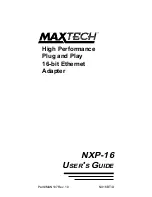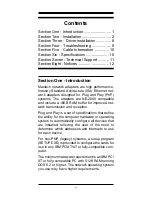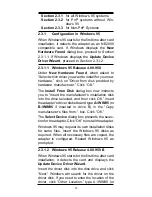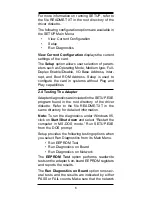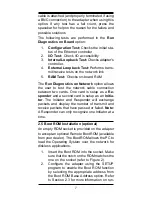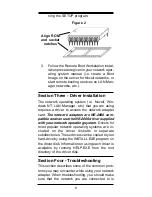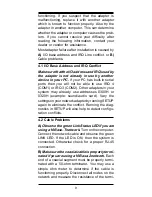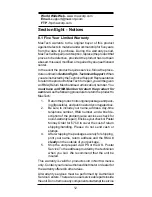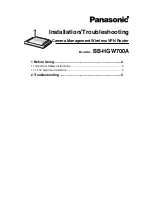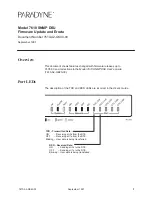
9
functioning. If you suspect that the adapter is
malfunctioning, replace it with another adapter
which is known to function properly. Also try the
adapter in another computer. This can determine
whether the adapter or computer causes the prob-
lem. If you cannot resolve your difficulty after
reading the following information, contact your
dealer or vendor for assistance.
Most adapter failure after installation is caused by
A) I/O base address and IRQ Line conflict, or B)
Cable problems.
4.1 I/O Base Address and IRQ Conflict
Make sure that the I/O address and IRQ used by
the adapter is not already in use by another
device in your PC
. If your PC has built-in serial
ports then you will not be able to use IRQ 4
(COM1) or IRQ 3 (COM2). Other adapters in your
system may already use addresses 0300H or
0320H (example: sound/audio card). Vary the
settings on your network adapter by running SETUP
again to eliminate the conflict. Running the diag-
nostics in SETUP will also help to detect configu-
ration conflicts.
4.2 Cable Problems
A)
Observe the green Link Status LED if you are
using a 10Base-T network.
Turn on the computer.
Connect the network cable and observe the green
LINK LED. If the LED is ON, then the system is
connected. Otherwise check for a proper RJ-45
connection.
B)
Make sure the coaxial cable is properly termi-
nated if you are using a 10Base-2 network.
Each
end of a coaxial segment must be properly termi-
nated with a 50-ohm terminator. You may use a
simple ohm meter to determine if the cable is
functioning properly. Disconnect all nodes on the
network and measure the resistance of the termi-
Summary of Contents for NXP-16
Page 16: ...15...

